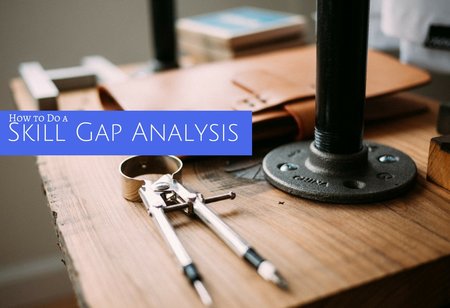Why Skill Gap Analysis Is Important For The Organisation?
By Sthitaprajnya Panigrahi

With each passing day technology advances one step ahead and along with it increases the need to master it. Organizations are experimenting and evolving along with the technologies to be the frontrunner in their sector and along with it comes the necessity of keeping the employees up-to-date with the technologies by enhancing their skills. The skill gap refers to the difference between the skills possessed by the employees and the skills that are demanded by the job. Performing a skill gap analysis will not only improvise the potentials of the employees but also improvise the standard of the organization.
With the increase of emerging innovative competitors, organizations lacking employees with intense grasp over technology tend to perish sooner. “A diverse workforce is a prerequisite to unlocking the full potential of any organization. The more skilled people we have with a variety of experience, the higher our chances of identifying and patching vulnerabilities to help public and private organizations of all sizes eliminate blind spots, prioritize threats and close their respective cyber exposure gaps”, says DiwakarDayal, Managing Director, Tenable India.
Why to Identify Skill Gaps In the Workplace
Skill gap analysis is a tool to determine the existing gap between the current expertise of the employees and the skills that are vital to be acquired by them as per the need of the market demand. By conducting a skill gap analysis of the current employees, the synopsis of the organization will be clear. This will provide a head start approach for strategic planning of training and hiring which the company needs to do for achieving the objectives of the organization. This career development training of the employees to fill in the skill gaps will not only enhance the overall productivity of the company but will also work as the thrust it needed to surpass its competitors. In addition to this some of the surveys conducted predict that more than 52 percent of the candidates applying for a new job and the existing employees of various companies around the world face the worse situation of skill gaps at the workplace.
How to Conduct Skill Gap Analysis
The below-mentioned points will help to draw the graph of efficiency of the workforce effectively:
- Study of Current Technologies: A proper scrutiny of the current technologies and market will provide the company the area which it needs to work upon. By analyzing the requirement of these trends with reference to organizational objectives, will not only give a hold over the future but also will help to determine skills needed at present.
- Employee Assessments: An assessment of the workforce consisting of quizzes and set of questions, based upon the required skills will give a complete overview of the individual’s potential.
- Current Level of the Employees: Apart from showing the current proficiency possessed by the individual, the assessment result will also show the development of the employee after joining the organization. Based on the performance of the employee it will be easier to study the difference of skills that are needed to be filled.
- Identification of Important Skills and Levels: After the evaluation of the employees, the classification of the skills is required to be done on the basis of expertise level. Every individual will need different training in diverse skills as per his/her proficiency and the necessity of the organization
- Addressing the Gaps: These gaps in skills, which are bound to affect the performance of the organization, in the long run, needs to go through some upgrading. By training appropriately and accurately to the existing employees and hiring the workforce needed by the organization will assist in the mitigation of these gaps.
In Conclusion
Most of the jobs are on the verge of vanishing with the invasion of technology as the demand for manual workforce is in a declining state. The markets almost often face the tides of revolution in technology and in such a time, it is essential that the organizations must keep the workforce aware of the advanced trends to sustain and survive the competition.







